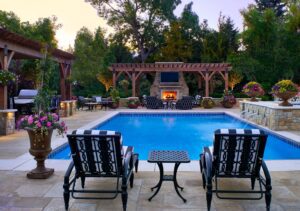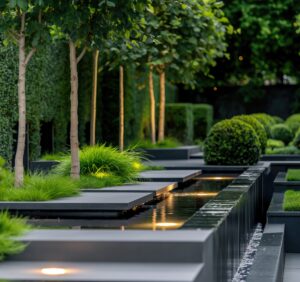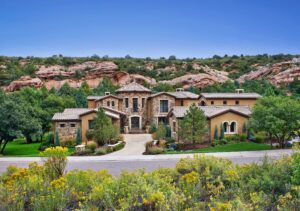The need for landscaping to conserve water gained new attention following the drought of 1977, especially in the western states. Nearly 50% of the water used by the average household goes toward maintaining landscaping in Denver, landscaping Castle Rock, and similar regions. This highlights the importance of designing landscapes that balance beauty with sustainability
Soil Preparation: The Key to Water Preservation
Healthy soil is essential for conserving water. In sandy soil, water and nutrients are lost through leaching below the root zone. In contrast, heavy clay soil—common in areas like Castle Rock and Littleton—leads to water loss via runoff. Ideal soil has a balance of sand, silt, and clay, with 50% pore space to conserve moisture and support plant life.
Clay-dominant soils often compact into airless, water-repelling layers, making it difficult for plants to access water. Sandy soils, with their large pore spaces, lose water quickly. Adding organic matter like compost or mulch can improve soil structure and water retention.
Xeriscaping: A Solution for Colorado Landscaping
According to Colorado State University’s extension programs, xeriscaping—a term coined by the Denver Water Department—focuses on landscaping with water conservation in mind. This approach is ideal for areas like landscaping in Centennial or Denver, where drought conditions are a concern. Derived from the Greek word “xeros” (dry), xeriscaping promotes efficient water use while maintaining aesthetic appeal.
Using Mulch and Proper Irrigation Techniques
Mulches are invaluable in reducing water use. They moderate soil temperatures, reduce evaporation, and improve soil conditions. Effective irrigation practices can save 30% to 80% of water use around the home.
- Check sprinkler systems for even coverage to prevent pooling or missed areas.
- Water turf differently than shrubs and flowers.
- South and west-facing areas require more water due to higher evaporation rates.
- On slopes, apply water slowly to avoid runoff.
Installing a professionally designed irrigation system can further enhance water efficiency.
Designing a Water-Wise Landscape
Whether redesigning an old yard or starting fresh, a plan is essential. South and west-facing exposures lose the most water, particularly near buildings or paved surfaces. Switching to drought-resistant plants in these areas can significantly reduce water use. Avoid excessive use of rock and gravel, as these materials can raise temperatures and cause runoff.
Slope or grade also affects water retention. Steep slopes, especially on south and west exposures, are prone to water loss. Drought-resistant ground covers can help slow evaporation and shade the soil.
Xeriscaping Principles for Beautiful, Sustainable Landscapes
A well-designed xeriscape incorporates:
- Limited turf areas requiring heavy watering.
- Drought-resistant sod and plants.
- Moisture-sensing irrigation systems.
- Rock and mulch features that blend with lush planting areas.
By combining these elements, landscaping in Littleton, Castle Rock, or Centennial can conserve water while creating stunning outdoor spaces.
The Benefits of Xeriscaping
Whether your goal is to save water or reduce utility bills, xeriscaping offers sustainable and attractive results. Work with a professional landscape designer to develop a customized plan that maximizes your investment, conserves water, and enhances your outdoor living experience. From Denver landscaping to drought-resistant designs in Castle Rock, a sustainable garden can create lasting beauty and memories.



